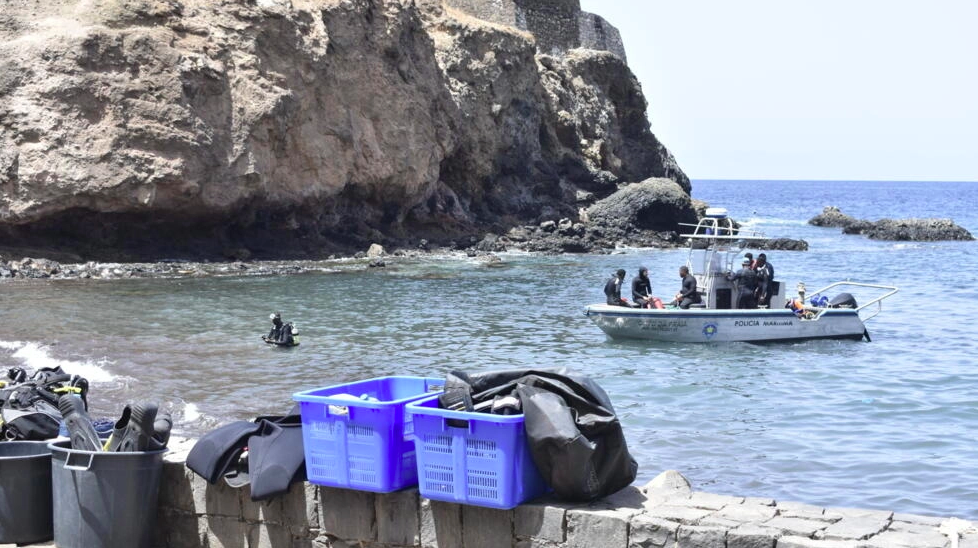In the seabed off the African continent, part of the historical heritage remains invisible and unexplored. Shipwrecks from different eras, prehistoric villages buried underwater, and everyday objects that fell from ships. For the past decade, a few archaeologists and heritage professionals have begun to take an interest in what lies beneath the water. Some gathered in Cape Verde in June as part of an UNESCO field school to strengthen their skills.

Off the coast of Cidade Velha, the first colonial city of Cape Verde, is a site where pottery, ceramics, and anchors are concentrated, which archaeologists are exploring. © Théa Ollivier/RFI
Off the coast of Cidade Velha, the first colonial city of Cape Verde, Cezar Mahumane climbs back onto the boat with an oxygen tank on his back. He has just explored a site twenty meters deep where pottery, ceramics, and anchors are concentrated.
The archaeologist, who has been diving for ten years, came from Mozambique to enhance his skills in Cape Verde. « It is very interesting to compare what we have here and there. Because of the distances, you can get an idea of the scale of the contacts and understand that the globalization we talk about today is not new. And fortunately, the archaeological material can prove it, » he says.
“These are sites related to prehistory”
In Mozambique, archaeologists have been exploring the seabed since 2014, as have those in Senegal. Moussa Wele, one of the first Senegalese underwater archaeologists, completed a thesis on his country’s subaquatic potential: « These are sites linked to prehistory, especially the Neolithic period. We can trace back to historical phases like the two world wars, but also more recent periods. »
Other countries, like Gambia, still have unexplored subaquatic remains. Musa Foon works at the National Centre for Arts and Culture in Gambia. He is the first to be trained in underwater archaeology in his country: “We have many wrecks and artifacts still underwater. Two large ships sank in the Gambia River around the 18th century, but no one has ever explored them to see their condition.”
For Portuguese historian João Paulo Oliveira e Costa, who heads the UNESCO Chair on Ocean Heritage, underwater archaeology is important on the continent because it allows us to go back more than 10,000 years. « The oldest materials an underwater archaeologist works with are not ships but submerged Neolithic villages in the Mediterranean or the Black Sea. There are cities with statues and buildings more developed than a Neolithic village, » he explains. UNESCO’s 2001 convention encourages the understanding, documentation, and protection of underwater cultural heritage.
Source: RFI

